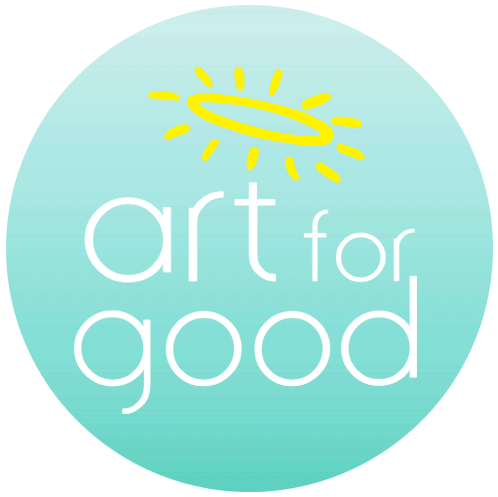Author: Cathy Malchiodi – PhD
Expressive Arts: Soothing Brain and Body
Decades ago, one of the first things I noticed in my work with children exposed to interpersonal violence was how they physically responded to art-making and play activities. While these young clients often remained hypervigilant or withdrawn during therapy sessions, they also actively sought out ways to self-soothe.
Some children found relief in simply watching paint disperse in a jar filled with water; others seemed to lose themselves in creating repetitive patterns while drawing, doodling, or scribbling. Expressive arts and play activities also served as a form of brief dissociation from anxieties or fears. In most cases, these children found refuge and respite through rhythmic kinesthetic, sensory-based experiences.
Purposeful applications of expressive arts therapy support self-regulation, and for this reason, they are often used to help children and adults reduce hyperactivation and the stress responses that result from traumatic events. They can be combined with other standard approaches; for example, art therapy has been combined with mindfulness-based practices to induce and deepen relaxation.
Music therapy has considerable success in reducing hyperarousal, including measurable physiological responses, such as heart rate and sympathetic nervous system reactions. In brief, most expressive arts therapy sessions integrate rhythmic breathing, mindfulness-related practices, and other calming routines into overall intervention, particularly when working with individuals who have experienced traumatic events.
Individuals in treatment often note that the structure, containment, and grounding qualities that expressive arts provide feel “safer than words.” In contrast to asking individuals to revisit distressful events and emotions that the mind and body try to avoid, expressive arts interventions generally seek to establish an emotional distance from traumatic reactions to establish a sense of safety, first and foremost.
For example, dramatic enactment and imaginative play capitalize on distance, allowing the therapist to help participants explore problems or distressing emotions through metaphor rather than reality. The simple act of drawing provides a way to make tangible a sensation or feeling, placing it outside oneself on paper. In brief, creative approaches have the potential to support self-regulation by giving individuals ways to separate from what is going on internally while experiencing what is often a pleasurable or novel creative experience.
Over 100 years ago, Freud observed a behavioral response that underscores why we should use “action” rather than words alone to address dysregulation stemming from traumatic stress. He called this response “the compulsion to repeat,” noting that individuals who do not remember distressful events are likely to repeat those experiences both in treatment and in life. In other words, these repressed memories are repeated in the here-and-now rather than allowing the experiences to live in the past where they originated.
While my psychotherapeutic stance is not psychoanalytic, Freud’s concept does highlight an important characteristic of all forms of expressive arts therapy—they are action-oriented processes that may help traumatized individuals “repeat” the memories Freud cited but in a different form. Traumatized individuals are, in fact, action-oriented in the sense that they instinctively use various unhealthy responses to address self-regulation.
They also simply may not have the appropriate language (speechless terror or alexithymia) to express their feelings and body-based sensations; they may dissociate, lacking the ability to articulate their emotions; and their somatic responses may have become dysregulated. The kinesthetic/sensory qualities of rhythm, movement, enactment, visual imagery, touch, and sound found in expressive arts naturally involve active participation rather than talk-only. Also, verbally analyzing and interpreting dysregulation, along with a focus on “what’s wrong,” do not necessarily support self-regulation.

Engaging the Body Through Arts-Based Expression
While some therapists believe that body-based techniques are useful adjuncts to treatment, many now view the body as central in the process of trauma reparation. Expressive arts therapy is one of the few approaches to trauma treatment that consistently involves the body in some way. Art forms like dance and drama obviously include physical movement, but we also sense something in our bodies when we make art, play a musical instrument, engage in creative writing, and even when we look at an artwork in a museum, listen to music, or read powerful prose or poetry.
This phenomenon is a form of embodied intelligence; the term embodied refers to the body-centered intelligence that informs one of what one knows and experiences in the environment. Traumatized individuals, especially those who have endured chronic traumatic events, find themselves literally cut off from their bodies or, at the very least, are not conscious of how their bodies are communicating or sensing from their surroundings.
The same soothing qualities of expressive arts described in the previous section also serve as forms of embodied intelligence, reintroducing individuals to how the body communicates the sensations and emotions related to trauma. These body-based experiences may come in the form of anchoring and grounding, transcendence and peak moments of achievement, or focused awareness and presence in the moment, where there is a full sense of engagement in the ongoing experience. In brief, expressive arts therapy naturally shifts individuals from being “in their minds” to being more fully in their bodies.
Specific applications of expressive arts therapy have so many unique dimensions that can enhance self-regulation and engagement that are too detailed to include in this post. For more specific information, check out my past posts on grounding, anchoring, mirroring and entrainment, and bilateral movement and sensory integration.
Link to the original article to explore more!
References
Malchiodi, C. A. (2020). Trauma and Expressive Arts Therapy: Brain, Body, and Imagination in the Healing Process. New York: Guilford Publications.



 Amanda Chen
Amanda Chen